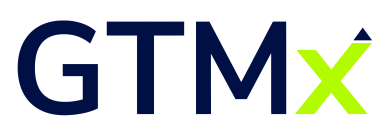Building the Foundation for Commercial Growth
As we reach the halfway point of 2025, GTMx Consulting has been immersed in meaningful conversations across a range of commercial teams. A few common themes have emerged, each linked by a shared challenge: how to do more with less and how to do it smarter.
These are not new questions, but their urgency has grown. Tightened resources, evolving expectations, and the continued shift in customer engagement models have sharpened the need to get the fundamentals right.
We’ve observed three hot topics that organisations are consistently grappling with:
1. Prioritisation Under Pressure
Why: With leaner go-to-market teams and increased commercial pressure, businesses are being forced to focus only where the greatest value lies. That means sharper product and account prioritisation.
How: This requires effective data management—bringing together multiple, often siloed, data sources into one coherent view. Only then can businesses truly identify which accounts or products offer the highest growth potential.
What: We’ve supported teams to connect disparate datasets to uncover hidden value. In one instance, aligning sales activity with historical purchasing patterns and market access data uncovered under-served high-potential accounts, leading to reallocation of resources. The result? A targeted brand expected to grow 30% has already reached 40% growth in just three months in key accounts.
2. Evolving from Share of Voice to Key Account Management
Why: Traditional call-plan-based thinking is reaching its limits. Companies are shifting from coverage to impact, from “how many calls did we make?” to “how did we advance this account?”
How: This requires more than a new KPI, it demands a mindset shift, one that is underpinned by the right tools and processes. CRM systems need to support this evolution, not slow it down. Key Account Management (KAM) frameworks must integrate into the everyday rhythm of the team, rather than sit on the sidelines as a strategic ideal.
What: We’ve seen success where organisations have embedded account plans into CRM workflows, not always deployed in the CRM yet intrinsically linked, focused on outcomes, and simplified inputs. There’s also growing curiosity around how AI can help reduce admin, recommend actions, and surface insight. Turning the CRM from a reporting burden into a planning asset.
3. Smarter Analytics: Less Is More
Why: Teams are overwhelmed by dashboards and reports that show everything, yet say very little. The desire to visualise data has, in some cases, outpaced the need to understand it.
How: The shift is towards clarity and action. This means asking: “What do we need to know to act?” not “What can we report on?” Fewer, better-chosen KPIs can provide a clear picture of performance. Predictive and scenario-based analytics can then layer on foresight.
What: One organisation we worked with stripped back its reporting to a set of balanced KPIs linked to commercial actions. By simulating ‘what if’ scenarios, such as a change in formulary access or competitor activity, they’ve gained the confidence to make faster, bolder decisions.
Foundations First
The commercial environment will remain demanding for the rest of 2025. But the organisations that build these foundations: clear priorities, effective tools, and purposeful insight, are the ones positioned for sustainable growth.
It’s not about adding more complexity. It’s about simplifying to amplify.
Inspiring go to market and commercial excellence
GTMx Consulting Ltd.
info@gtmx.co.uk
Privacy Policy | Cookie Policy | Sustainability Policy
We need your consent to load the translations
We use a third-party service to translate the website content that may collect data about your activity. Please review the details in the privacy policy and accept the service to view the translations.




